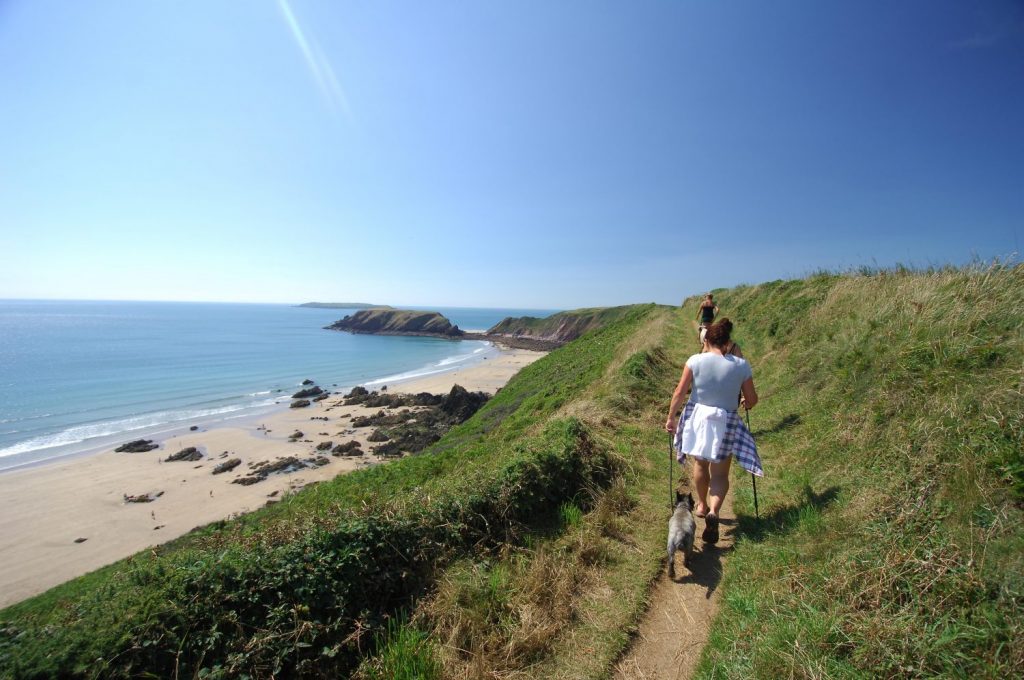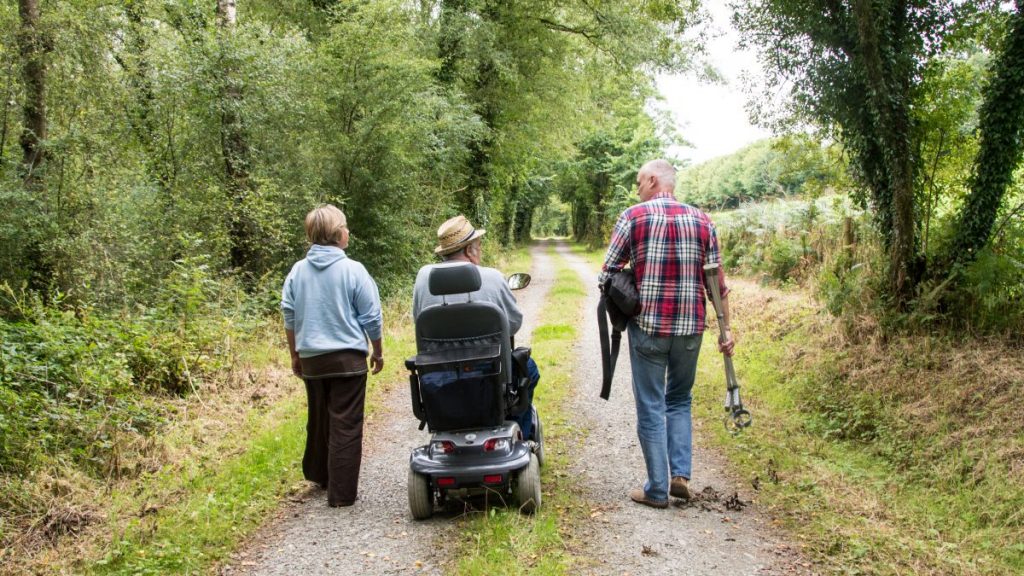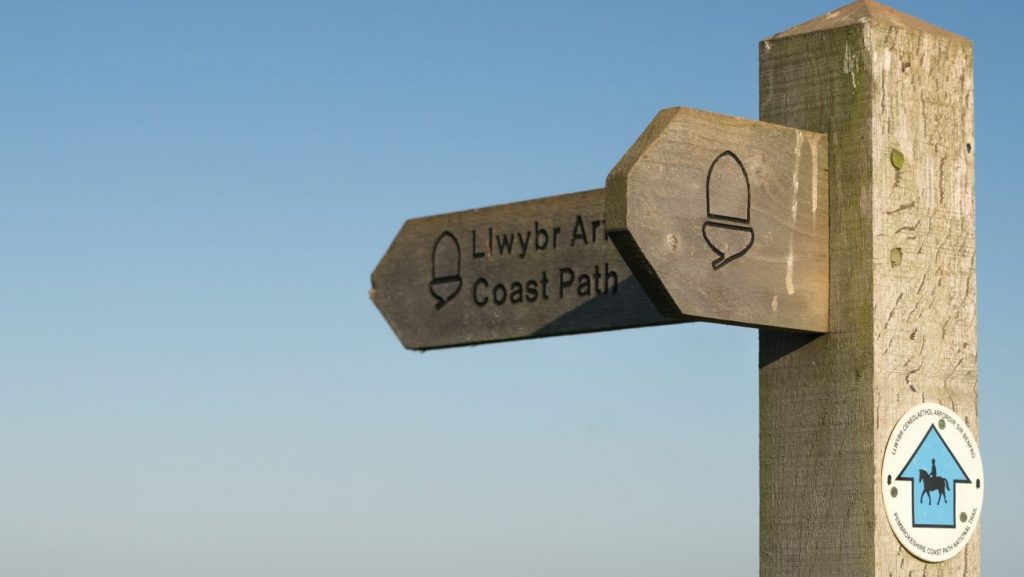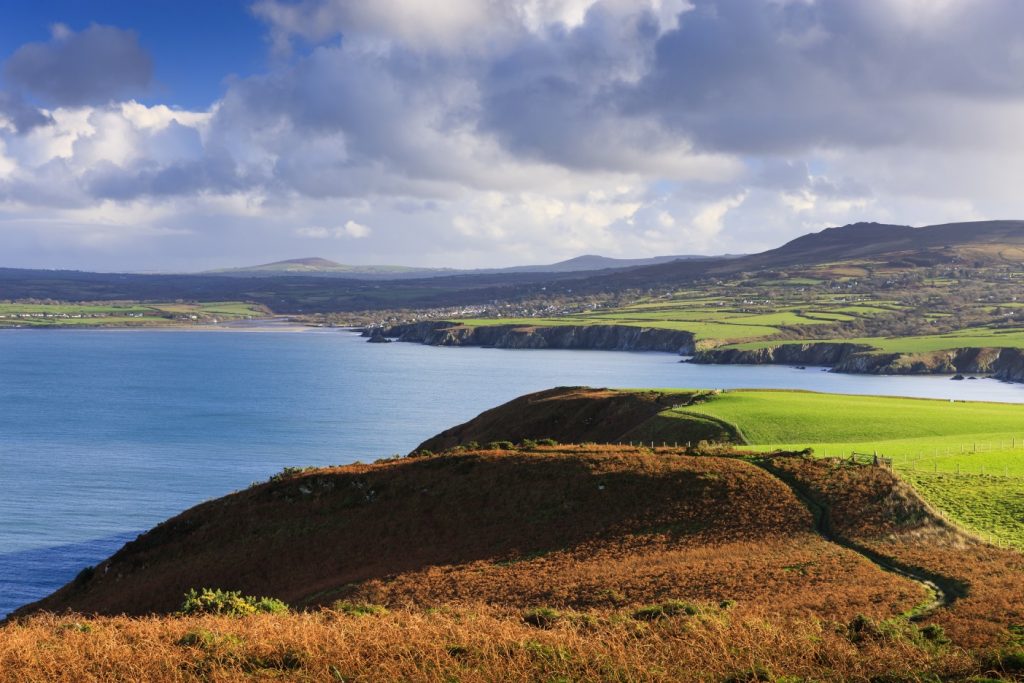DISTANCE/DURATION: 4.0 miles (6.4 km) 2 hours.
PUBLIC TRANSPORT: *Strumble Shuttle 404 (*seasonal, hail & ride).
CHARACTER: Cliff edge, rugged, can be wet and muddy in places, 1.4 miles (2.2 km) minor road walking.
LOOK OUT FOR: Cliffs amongst the highest in Pembrokeshire, coastal views, choughs, seabirds and seals.
CAUTION: Take great care if gaining access to Pwllcrochan beach.
The cliffs between Pwll Deri and Pwllcrochan are among the highest around the Pembrokeshire coast and make a dramatic setting for a walk. Look out for seabirds and, around the clifftops, choughs.
The chough is rare around Britain’s coast but the birds can often been seen along this stretch of coast. Glossy black, they are easy to identify as their beak and legs are a vivid pink.
You will often see choughs as they search for insects among the many wildflowers that thrive in the short grass growing at the tops of sea cliffs.
In early summer the route at Penbwchdy Head passes through drifts of flowers, including sea pink and sea campion.
The coast between Strumble Head and St David’s Head has some of the most dramatic scenery in the National Park.
It is a landscape of headlands and bays, created during the Ordovician period – between 500 and 440 million years ago.
Then volcanoes were active in the area throwing out lava flows that cooled to form very hard igneous rocks.
In places the molten rock did not reach the surface, but cooled slowly trapped below the ground.
Over millions of years these igneous intrusions have resisted erosion far better than surrounding rocks to become rocky crags like Garn Fawr, just to the north of this route.
The coastal headlands too, like Penbwchdy (pen is Welsh for head), are formed from igneous rocks that have resisted erosion better than the bays like Pwllcrochan, which are of softer Ordovician rocks.
Pwll Deri and Pwllcrochan are havens for the large community of grey seals that live along Pembrokeshire’s north coast. In late August, September and October seal mothers give birth at quiet coves like these.
Ian Meopham, West Sector Ranger for Pembrokeshire Coast National Park Authority, says: “In autumn there’s a very good chance of seeing new-born seal pups. If you do, try not to disturb the mother by being as quiet as possible, staying below the skyline and keeping your distance.”
Find this Walk
Grid ref: SM888372
SAFETY FIRST!
- Take great care when on the Coast Path
- Stay on the path and away from cliff edges
- Wear boots and warm, waterproof clothing
- Take extra care in windy and/or wet conditions
- Always supervise children and dogs
- Leave gates and property as you find them



